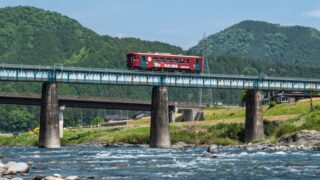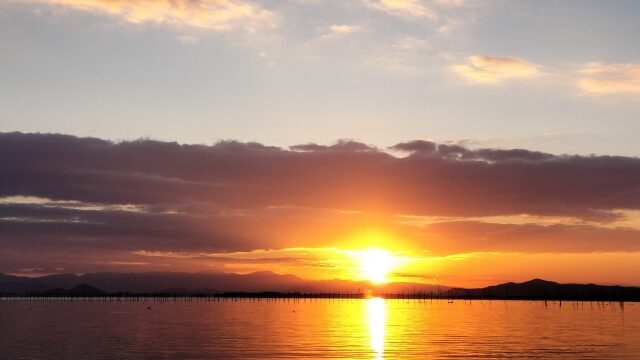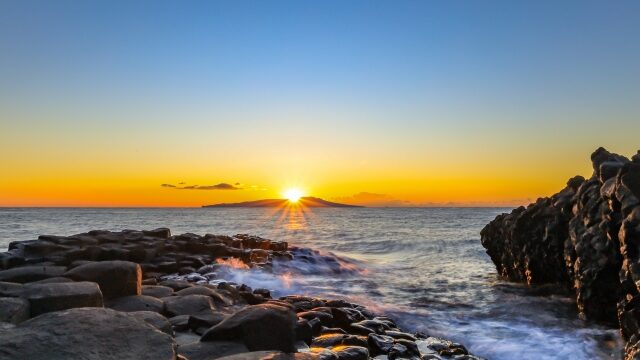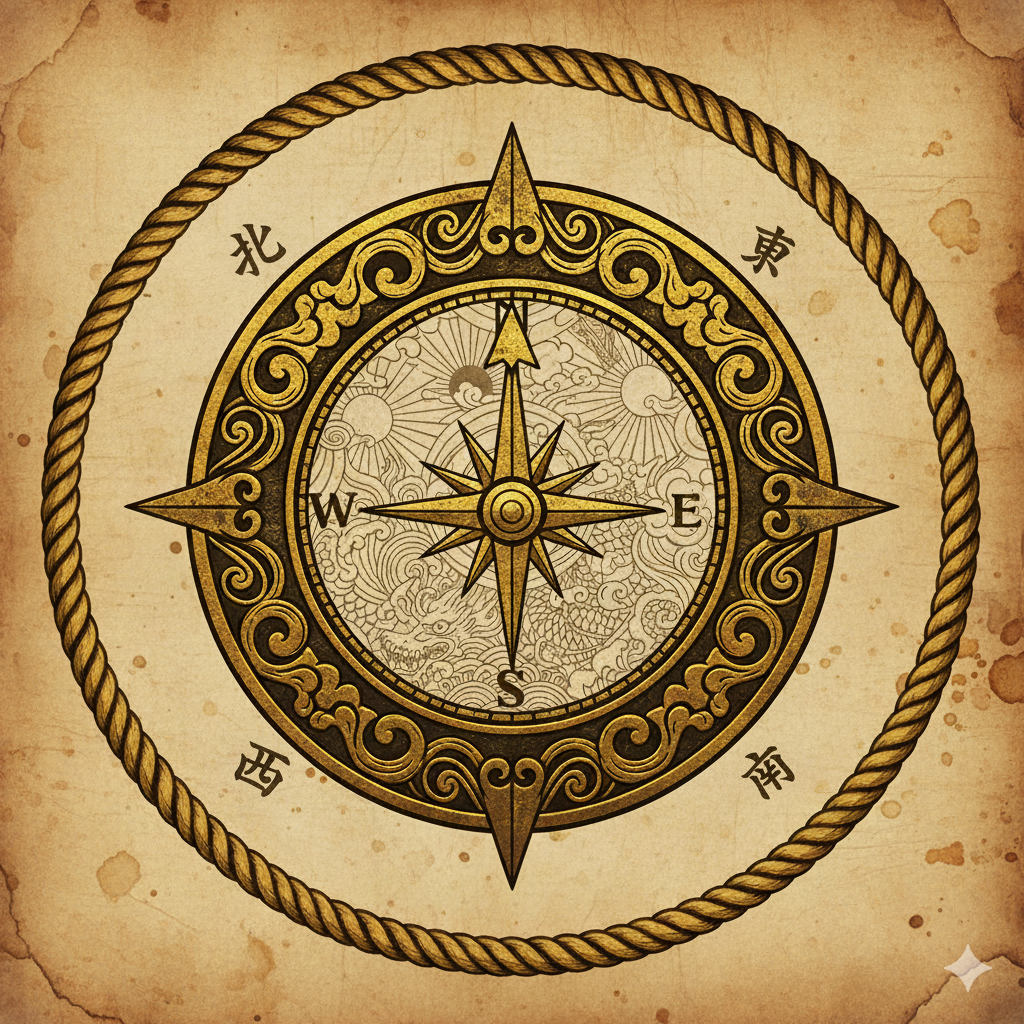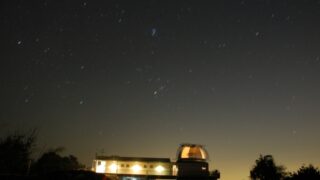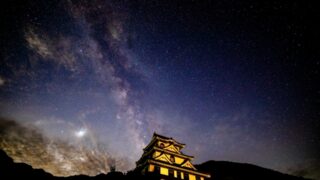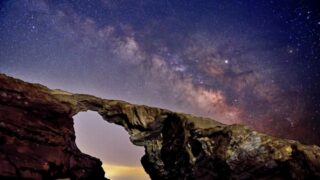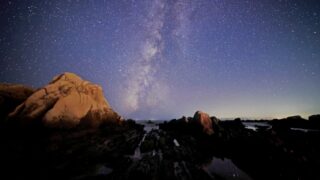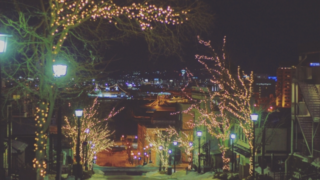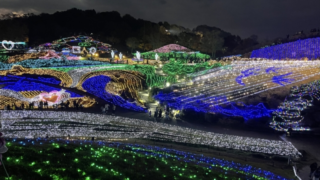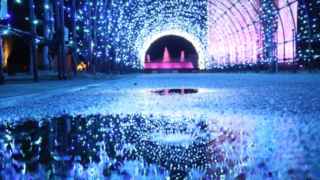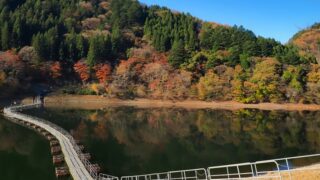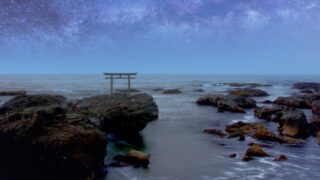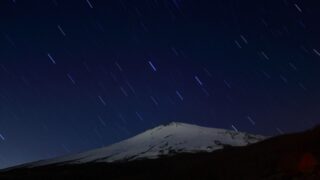Railway photography, commonly known as “train spotting,” offers more than just capturing locomotives. The true magic lies in artistically capturing trains as they blend into magnificent natural landscapes and beautiful scenery, freezing those perfect moments in time. The Kanto-Koshinetsu region is a treasure trove for railway photography enthusiasts, featuring spectacular views of Mount Fuji, seasonal flowers, and historic local lines. Today, we propose a new travel style that combines these captivating railway photography spots with the freedom of RV travel. Join us with your camera in hand as we search for those special moments featuring your favorite trains and landscapes.
Why RVs? The Perfect Match for Train Photography Travel
There are numerous advantages to choosing an RV for railway photography trips.
- Focus on photography without time constraints: Railway photography often depends on lighting conditions during dawn or dusk. With an RV, you can stay near shooting locations, allowing you to capture those perfect moments without worrying about time.
- Easy equipment transport: Camera bodies, interchangeable lenses, tripods, rain gear, and other photography equipment can easily add up. RVs solve storage concerns effortlessly.
- Weather adaptability: Even during sudden rainfall, you can wait inside the vehicle or dry wet equipment, making you less dependent on weather conditions.
- Comfortable base camp: Between shoots, you can rest, eat, and review images in your mobile hideaway.
- Flexible itineraries: Adjust your plans spontaneously – “Let’s extend our trip there today” or “I love this place, let’s stay another day” – based on mood and weather.
- Economic benefits: Saving on accommodation costs allows you to allocate more budget to transportation and local experiences. Even if you don’t own an RV, rental services have become increasingly accessible for easy trial experiences.
Essential Photography Equipment and Simple Techniques
While professional equipment has its appeal, your existing camera will work fine to start. Here we introduce basic equipment and simple techniques to expand your photographic expression.
- Camera and Lenses:
- Wide-angle lens: Effective for capturing landscapes and trains as an integrated composition.
- Telephoto lens: Allows you to make trains the main subject while compressing backgrounds for dramatic effect.
- Tripod: Essential for night photography or when creating smooth water flow effects (slow shutter). Also helpful for preventing camera shake and carefully composing shots.
- Polarizing Filter (PL): Effective for enhancing sky blues and reducing water surface reflections. Note that effects can be too strong and unnatural at high altitudes.
- Other essentials: Spare batteries, memory cards, rain protection gear, and a remote shutter release (accessory for triggering shots without directly pressing the camera button).
Simple Techniques
- Reading Light:
- Front lighting: Illuminates the entire subject brightly with vivid colors. Morning shoots are often recommended at many locations.
- Backlighting/Side-backlighting: Effective for creating dramatic silhouettes or highlighting steam locomotive smoke textures.
- Creative Composition:
- Reflections: Create magical expressions by reflecting trains and landscapes in water surfaces (example: Kominato Railway, Iikyu Station).
- Elevated perspectives: Shooting from high vantage points effectively captures landscape expanses and train positioning (example: Fujikyu Line, Nichigetu Shrine).
- Panning shots: Using slow shutter speeds while following moving trains creates flowing backgrounds that emphasize speed (example: Isumi Railway, between Kugahara and Higashi-Somoto stations).
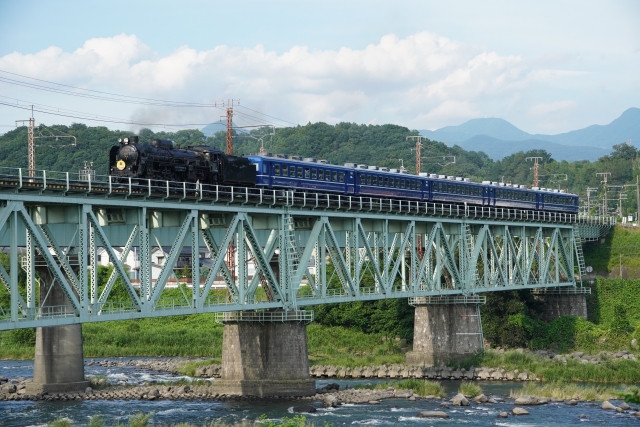
Photography Etiquette for Comfortable Shooting
To protect the railways and nature that many people love, and ensure everyone can enjoy photography comfortably, considerate etiquette is essential.
- No entry to restricted areas or private property: Never enter railway property or private land without permission.
- Safety first: Pay close attention to operating trains and photograph from safe locations.
- Consideration for other photographers and local residents: Practice the spirit of sharing at popular spots. Be mindful of tripod placement and conversation volume. Avoid obstructing residential roads or farm work, and don’t forget to greet locals.
- Careful flash usage: Using flash (speedlight) toward operating trains is strictly prohibited as it can impair driver vision and is extremely dangerous.
- Pack out all trash: Take all garbage with you to preserve beautiful landscapes.
【Spot Guide】Kanto-Koshinetsu Scenic Railway Line by RV
Now, let’s hop in the RV and set out to discover captivating railway landscapes!
1. 【Kominato & Isumi Railways】Spring Fairy Tale Through Carpet of Rape Blossoms and Cherry Trees
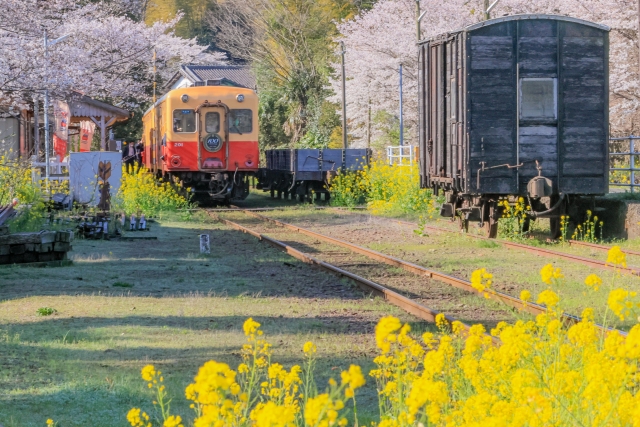
The Kominato and Isumi Railways running through Chiba Prefecture’s rural mountains feature retro train cars amid seasonal flowers. Spring is particularly magical, with yellow rape blossoms and pink cherry trees painting the line like a living painting. The photography highlights here involve capturing charming trains amid spring’s colorful landscapes. Use wide-angle lenses to include endless rape blossom fields with trains, or telephoto lenses to isolate trains emerging from cherry tree tunnels – various compositions can express the full glory of spring.
- Ishigami Rape Blossom Fields (Kominato Railway): The extensive rape blossom fields between Kazusa-Okubo and Yoro-Keikoku stations represent one of Kominato Railway’s iconic landscapes. The Fire Orange and Mourn Ivory trains crossing the yellow carpet are must-see sights. During cherry blossom season, you can enjoy pink and yellow collaborations. Located about 15 minutes walk from Yoro-Keikoku Station with organized parking available.
- Iikyu Station (Kominato Railway): Famous for “reflections” of the station building and trains in rice fields before the station. During cherry blossom season, cherry colors add to the water surface for magical photography opportunities. This popular spot requires early arrival for good positioning.
- Kugahara to Higashi-Somoto Station (Isumi Railway): Isumi Railway’s yellow trains pair perfectly with cherry blossoms. The gentle curve section is ideal for telephoto and panning shots. Kugahara Station’s secluded atmosphere adds charm. Transfer is possible at Kazusa-Nakano Station on the Kominato Railway.
Nearby Attractions:
- Yoro Valley: Scenic area offering hiking and hot springs for refreshing breaks between photography sessions.
- Otaki Castle: Located along the Isumi Railway line, this castle is associated with Honda Tadakatsu, one of Tokugawa’s Four Heavenly Kings. Historical exploration is highly recommended.
2. 【Watarase Valley Railway】Healing Journey Through Valley Beauty, Flower Peaches, and Retro Stations
The Watarase Valley Railway spanning Gunma and Tochigi Prefectures runs along beautiful valleys, offering seasonal natural beauty. The views from the open-window trolley trains are particularly spectacular. Photography highlights include dynamic valley beauty combined with trains, the gorgeous collaboration of spring-blooming flower peaches with trolley trains, and the nostalgic atmosphere of wooden station buildings from the Taisho era.
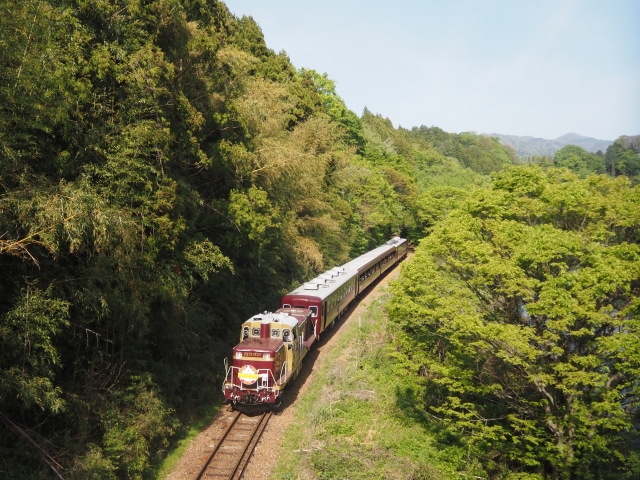
- Takatsudo Gorge (around Omama Station): Selected as one of “500 Beautiful Walking Paths in Japan,” this area offers expansive valley beauty. From Hanetaki Bridge and Takatsudo Promenade, you can photograph trains amid lush valleys. About 5 minutes walk from Omama Station with excellent access.
- Godo Station Flower Peaches: Station-planted flower peaches reach peak bloom in spring, creating spring-like collaborations with trolley trains.
- Kami-Kanme Station: This Taisho-era wooden station building is designated as a National Registered Tangible Cultural Property and remains actively used. The combination of retro station architecture and surrounding nature creates nostalgic landscapes. Note that trolley trains don’t stop here.
Nearby Attractions:
- Ashio Copper Mine Tourism: Learn about the copper mine history that supported Japan’s modernization. Trolley mine shaft tours are available.
- Tomihiro Art Museum: Museum displaying Tomihiro Hoshino’s poetry and paintings beside Kusaki Lake, offering soul-cleansing experiences.
3. 【SL Gunma】Powerful Steam and Smoke Creating Dynamic Railway Spectacle
“SL Gunma Minakami” running through Gunma Prefecture features steam locomotives like D51 498 powerfully racing through magnificent nature along the Tone River. SL photography highlights include capturing that raw power – the forceful smoke emission on gradient sections, the dynamic movement of turntable direction changes, and experiencing the breath of these “living machines” shoveling coal and generating steam up close.
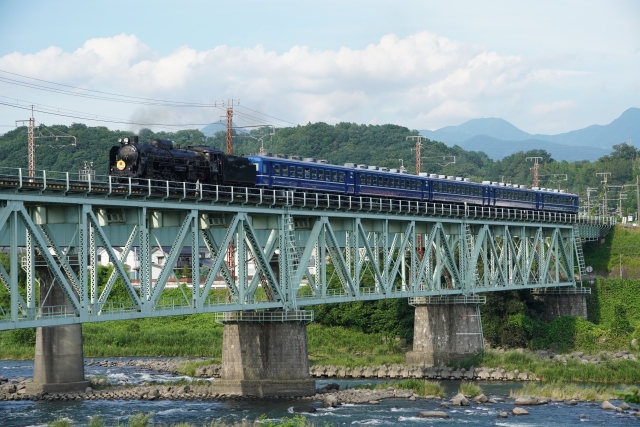
- Tone River Scenery and Suwa Gorge: After passing JR Shibukawa Station, mountain scenery unfolds with opportunities to photograph SLs against Tone River and distant mountains. Suwa Gorge is particularly beautiful, offering perfect points for capturing train-and-nature harmony.
- Turntable Square (Minakami Station): After arriving at Minakami Station, you can observe and photograph steam locomotives changing direction and undergoing maintenance up close.
- Shibukawa Station Stop: The approximately 30-minute stop provides chances to photograph D51’s powerful front view and coal feeding into the boiler room in detail.
Nearby Attractions:
- Minakami Hot Spring Resort: Perfect hot spring area for healing photography-weary bodies. Many day-trip bathing facilities available.
- Tanigawa-dake Ropeway: Easy access to Tanigawa-dake’s spectacular views. The summit vistas are breathtaking.
4. 【Hakone Tozan Railway】Hydrangea-Colored Switchbacks, Red Trains Challenging Steep Gradients
The Hakone Tozan Railway running through Kanagawa Prefecture’s popular tourist destination, Hakone, is famous for switchback climbing on steep gradients and the “Hydrangea Train” during rainy season. Photography highlights capture the contrast between Hakone’s rich nature and the red trains challenging it. Particularly from mid-June to late July during hydrangea season, you can photograph beautiful collaborations between trackside hydrangeas and trains up close, with nighttime illumination creating magical scenes.
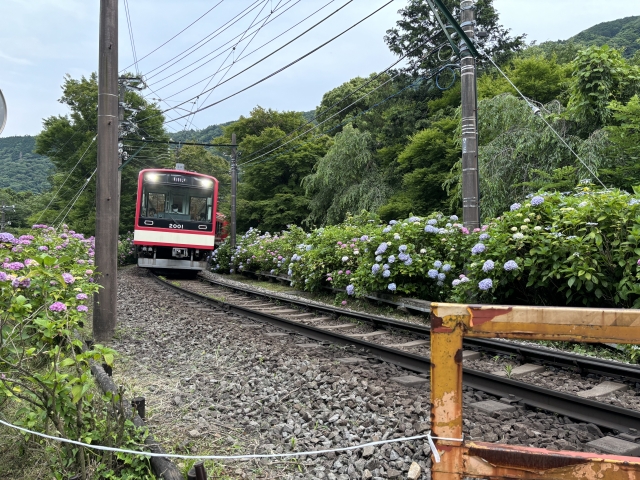
- Hydrangea Train Route (especially around Ohiradai Station): Hydrangeas bloom so close to the tracks they seem within reach, with trains passing nearby for powerful photography opportunities. Night photography is possible during illumination periods.
- Chijo-no-taki Falls (Kowakudani Station): Beautiful falls with 3m height and 25m width offering delicate water flows. Using slow shutter speeds (tripod required) creates silk-like water effects contrasting beautifully with moss greens for magical photography. About 20 minutes walk from Kowakudani Station.
- Hakone’s Diverse Transportation and Scenery: Hakone offers various transportation including cable cars, ropeways, and pirate ships, which can be combined with mountain scenery for enjoyable photography sessions.
Nearby Attractions:
- Hakone Open-Air Museum: Outdoor museum where nature and art fuse. Perfect for art appreciation between photography sessions.
- Owakudani: Experience volcanic activity up close. Don’t miss the famous black eggs!
5. 【JR Iida Line】Visiting Secluded Stations and Tenryu River Gorge Beauty – Deep Local Line Journey
The JR Iida Line extending from Nagano to Shizuoka and Aichi Prefectures is known as a “treasure trove of secluded stations,” with many stations quietly nestled on cliff faces and deep in mountains. Iida Line photography highlights involve documenting untouched nature preserved due to difficult access, and the unique atmosphere of secluded stations that seem forgotten by time, alongside trains. Trains emerging from tunnels, quiet platforms, and surrounding deep greenery and Tenryu River scenery captivate visitors.
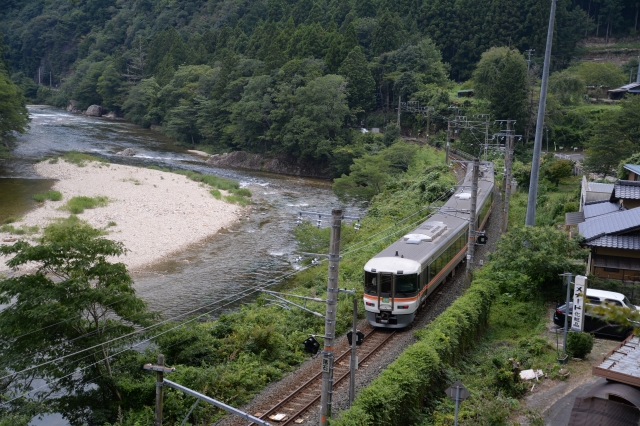
- Tamoto Station (Nagano Prefecture): A secluded station with narrow platforms clinging to cliff faces. The Tenryu River flows nearby, and trains emerging from tunnels create perfect photo opportunities. Access by means other than railway is extremely difficult.
- Kowada Station (Shizuoka Prefecture): A secluded station with rustic wooden station buildings, surrounded by abandoned buildings creating a unique atmosphere. Autumn foliage season is particularly beautiful.
- Window Scenery: Enjoy varied landscapes along Tenryu River valleys, Central Alps mountains, and tea plantations. When disembarking at secluded stations, prepare mountain-level equipment including food, water, and flashlights.
Nearby Attractions:
- Tenryu-kyo Gorge: Famous scenic valley. Enjoy promenade walks or river boat rides for boat-view scenery.
- Moto-Zenkoji Temple (Iida City): Ancient temple where the saying goes “Visit Moto-Zenkoji once, visiting only Zenkoji is half a pilgrimage.”
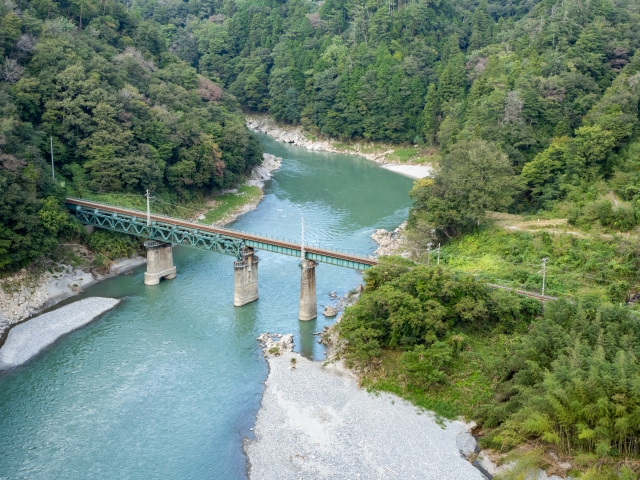
6. 【Suigun Line】Kuji River Clear Streams and Satoyama Journey – Meeting Japan’s Original Landscape
The Suigun Line connecting Ibaraki and Fukushima Prefectures runs through Kuji River clear streams and peaceful rural landscapes, evoking Japan’s original scenery. Suigun Line photography highlights capture soul-stirring Japanese everyday beautiful landscapes woven with local lines, though without flashiness. Kuji River sparkles as trains cross bridges, single-car trains running through satoyama greenery, and humble unmanned station atmospheres offer nostalgic scenes.
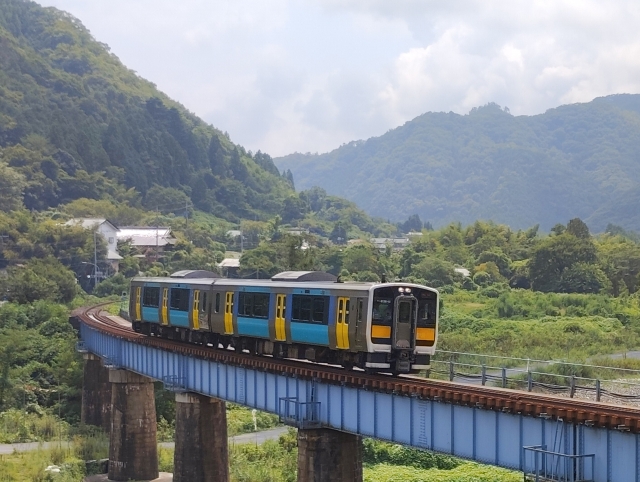
- Fukuroda Falls (around Fukuroda Station): One of Japan’s three famous waterfalls with dynamic beauty. Autumn foliage season is particularly spectacular. About 10 minutes by taxi from Fukuroda Station.
- Kuji River and Scenic Routes: Numerous photography points combining rivers and trains, including the submersible “Hirayama Bridge” near Shimo-Ogawa Station and railway bridges between Kami-Ogawa and Fukuroda stations.
- Shiroyama Park (between Iwaki-Asakawa and Satoshiraishi stations): Elevated photography of trains running through peaceful rural areas.
- Around Koshioe and Nakane stations: Small trains running through peaceful satoyama landscapes evoke nostalgia.
Nearby Attractions:
- Tsukimachi Falls (Daigo Town): Unique waterfall where you can enter behind the falling water, perfect to visit alongside Fukuroda Falls.
- Hitachi-Omiya City Historical Folk Museum: Experience Suigun Line area history and culture.
Conclusion: Camera and RV for Memorable Railway Photography Journey
The Kanto-Koshinetsu region holds many more charming railway photography spots than we could introduce here. With the freedom that RVs provide, previously impossible early morning scenic shots and challenges to difficult-access secluded stations become achievable dreams.
The changing expressions of nature through seasons, powerfully racing trains, and the warmth of people living there. Journeys seeking your own special shots while experiencing these elements firsthand will surely create unforgettable memories. Maintain safety and etiquette, never forget gratitude toward local communities, and enjoy wonderful railway photography life and RV life. Where will you head out next weekend?
